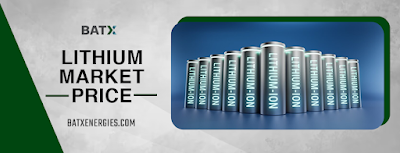Lithium Market Price: Understanding Volatility and Factors Influencing Market Dynamics
Lithium, the lightest metal on Earth, has become a vital factor in the green energy revolution. Its vital role in powering electric vehicles (EVs) and storing renewable energy has led to a surge in demand, consequently impacting its market prices. However, the lithium market is characterized by volatility, influenced by a variety of factors ranging from supply chain disruptions to geopolitical tensions. Through this blog post, you will come to delve into the complexities of Lithium Market Price, analyzing the factors that drive fluctuation and shape market dynamics.
The Rise of Lithium Demand
The demand for lithium has experienced exponential growth in recent years, primarily fuelled by the rapid expansion of the electric vehicle market. With governments worldwide implementing stringent emissions regulations and consumers increasingly embracing sustainable transportation, EV sales have soared, creating a surge in demand for lithium-ion batteries. Additionally, the proliferation of renewable energy sources such as solar and wind has further bolstered lithium demand for energy storage applications.
Supply Constraints and Production Challenges
Despite surging demand, the lithium market faces supply constraints and production challenges that exacerbate price volatility. Lithium extraction primarily relies on a few key producing regions, including Australia, Chile, and Argentina. Any disruptions in these regions, whether due to regulatory changes, labour disputes, or natural disasters, can significantly impact supply levels and drive prices upward. Moreover, the lengthy development timelines and capital-intensive nature of lithium mining projects contribute to supply lagging behind demand, increasing instability in the market.
Technological Advancements and Battery Innovation
Technological advancements in battery chemistry and manufacturing processes play a significant role in shaping lithium prices. As researchers and engineers continue to innovate, new battery technologies with improved energy density, longer lifespan, and faster charging capabilities are emerging. These advancements can potentially drive down the cost of lithium-ion batteries, making electric vehicles and energy storage systems more affordable and accessible. However, they also introduce uncertainty into the market, as the adoption of new battery chemistries could disrupt existing supply chains and reshape demand dynamics.
Geopolitical Factors and Trade Policies
Geopolitical tensions and trade policies can profoundly impact the lithium market, contributing to price volatility and market uncertainty. The concentration of lithium reserves in a handful of countries, coupled with geopolitical instability in some of these regions, raises concerns about supply security. Moreover, trade disputes and tariffs imposed on lithium and battery-related products can disrupt global supply chains, leading to fluctuations in prices and market dynamics. As governments prioritize domestic production and strategic autonomy, the geopolitical landscape will continue to influence the direction of the lithium market.
Environmental and Regulatory Considerations
Environmental and regulatory considerations also play a significant role in shaping the future of the lithium market. Concerns about the environmental impact of lithium mining, particularly in sensitive ecosystems such as salt flats and brine pools, have prompted calls for more sustainable extraction practices. Additionally, regulations aimed at reducing carbon emissions and promoting renewable energy adoption drive demand for lithium-ion batteries, further impacting market dynamics. As governments worldwide implement stricter environmental standards and incentivize clean energy technologies, the lithium market will undergo profound transformations.
Bottom Line
Understanding the factors influencing Lithium Market Price and market dynamics is essential for stakeholders navigating this rapidly evolving landscape. From supply constraints and technological innovations to geopolitical tensions and regulatory considerations, a multitude of factors converge to shape the trajectory of the lithium market. As the transition to a low-carbon economy accelerates, the demand for lithium is poised to continue its upward trajectory, presenting both opportunities and challenges for industry players. By staying informed and adaptable, stakeholders can effectively navigate the volatility of the lithium market and capitalize on emerging opportunities in the green energy revolution. To get further details about the Lithium market, you must visit our site BATX Energies today! Read More: lead acid battery recycling




Comments
Post a Comment